
“Hearst Magazines and Yahoo may earn commission or revenue on some items through these links.”
A stud finder is good for, well, finding studs you can’t see. Knowing where your studs are is crucial for hanging up heavy items, like mirrors or mounts for flat-screen TVs.
Studs—the wooden or metal beams that your drywall is attached to—are the most sturdy place to sink weight-bearing anchors into drywall to ensure your wall hangings don’t fall.
Some stud finders have other features, too, like deep scanning and AC wire detection. This can help make sure you don’t hit a pipe or wire when hanging something up—a mistake that can quickly become an expensive one. That doesn’t mean that stud finders work like X-ray vision, though—there’s a lot going on in walls, and it can be hard, despite advances in tech, for any device to determine what’s a pipe and what’s a wire, for instance.
To test all the features, we put a selection of stud finders through their paces on a wall of our own making and walls in real homes. We tested several options to find the best stud finders for home and commercial use, whether you just need a hand hanging up your new shelves or you’re hoping to avoid damage while you work within the drywall.
Best Stud Finders
What to Consider
Magnetic Versus Electronic Stud Finders
Magnetic stud finders work by waving the magnet along the wall until it catches on the fasteners that attach drywall to the studs. Since fasteners may be spaced over a foot apart on a single stud, it may take longer to locate one with a magnetic stud finder, but this is an affordable and simple option.
Magnetic stud finders aren’t always the most accurate, though—they rely on the fastener actually being driven into the stud. If the builder missed the stud, so will the magnetic stud finder. In commercial construction, where metal studs are standard, you may find magnetic stud finders more useful.
Most electronic stud finders work by sending out a signal from a sensor inside, then reading the signal that bounces back. When the signal changes, the stud finder beeps or flashes to let you know it’s found a stud.
Some also identify metal pipes or electrical wires. The most advanced stud finders use technology like ground-penetrating radar, which uses radar pulses to create a subsurface image.
For most occasional home uses, like hanging pictures or bathroom mirrors, a magnetic stud finder will do the trick. If you plan on hanging heavier items or anything that’ll bear weight, like a shelf or a bike rack, you might want to get an electronic stud finder to make sure you’re on target.

Stud finders have their jobs cut out for them, given the many variables in wall materials and construction. While you may get definitive results in one case, you could be left scratching your head in another. Take everything with a grain of salt, and use the stud finder in conjunction with the placement of electrical and plumbing fixtures to figure things out. Scroll to the bottom for more advice on how to get the most out of your stud finder.
How We Evaluated
For our evaluations, we built a four-by-eight-foot wall from common materials: wood and metal studs; drywall; copper, black, pex, and PVC pipes; and nonmetallic sheathed cable. Then, we scanned the wall with each of the stud finders.
All functioned as expected when it came to detecting the studs, but we quickly found that some of them didn’t work as advertised. We also took the stud finders to two homes—one, a mid-1800s house with lath and plaster, and the other, a 1970s tract house—for real-world testing.
We found several stud finders that worked great, and used our DIY and carpentry expertise here at Popular Mechanics to determine which stud finders were best for various uses. We also recommend a few that we haven’t had a chance to test out yet, but that we think are promising based on product specs and user reviews.
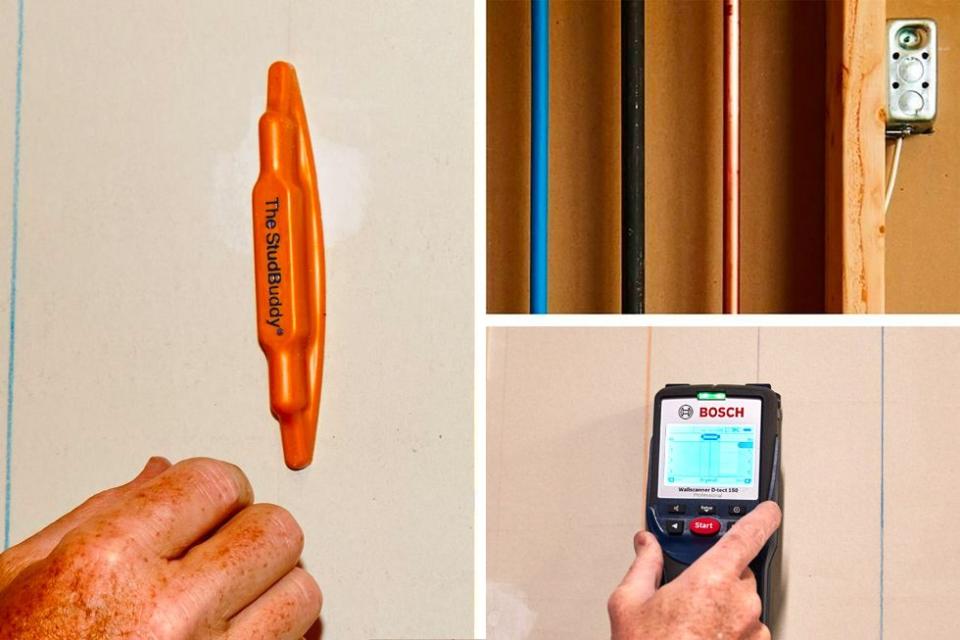

GMS120 Stud Finder
$89.00
amazon.com
Bosch’s GMS120 is much more than a stud finder (though it did locate the centers within an eighth of an inch). It can also detect live AC wiring, metal objects, plastic pipes filled with water, and even rebar in concrete. This Bosch unit has audible tones, an illuminated ring around the sensor area, and an LCD screen—and all three work in concert, guiding you to what you’re scanning for.

The ring turns red when over a stud, while the screen provides live-wire alerts and displays a bull’s-eye to indicate the stud’s center. Though the GMS120 didn’t find wiring in our wall, it did pick it up fairly accurately in the test houses.

Professional 9 LED Stud Finder
$27.44
walmart.com
This Hart Professional stud finder is one of the best values on this list, if not for its nine sensors, then for its unneeded calibration. This device can instantly find wood and metal studs, and multiple LEDs detect and track where objects are so users can be wary of wires, pipes, and live wires. Each object is tracked with lights that move with the device as you glide it against a wall, with red indicating studs and yellow showing live wires.
The display shows the full width of objects with a max depth of 1.5 inches, and a built-in pencil holder makes marking things easy. While we haven’t had the chance to test this ourselves, various consumers say this Hart device is one of the best stud finders they’ve used, rivaling premium options with its nine sensors. At its price, it’s a solid value buy.
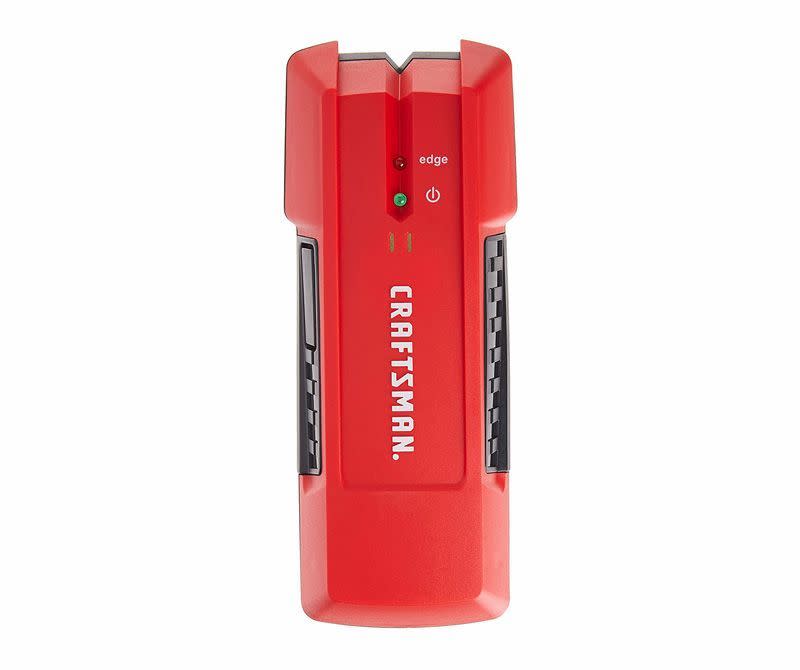
Hi-Vis Stud Sensor
$9.98
amazon.com
If you only need to find a stud, Craftsman’s Hi-Vis Stud Sensor will do exactly that. It’s simple and effective, designed to locate the edges of wood and metal studs. Pressing the button on the side, we slid the Stud Sensor slowly along the wall, keeping an eye on the indicator. When it lit up, we were at the edge of a stud. That indicator stayed on until we passed the other edge, then we slid the unit back over the stud to confirm and mark the edges before pinpointing the center. The tool consistently found studs under drywall up to three-quarters of an inch thick in our testing.

M90 Professional Stud Finder
$29.95
amazon.com
With nine sensors spread out over five inches, the ProSensor M90 accurately located studs. In testing, when we encountered one, the LEDs over the stud lit up to show its full width.
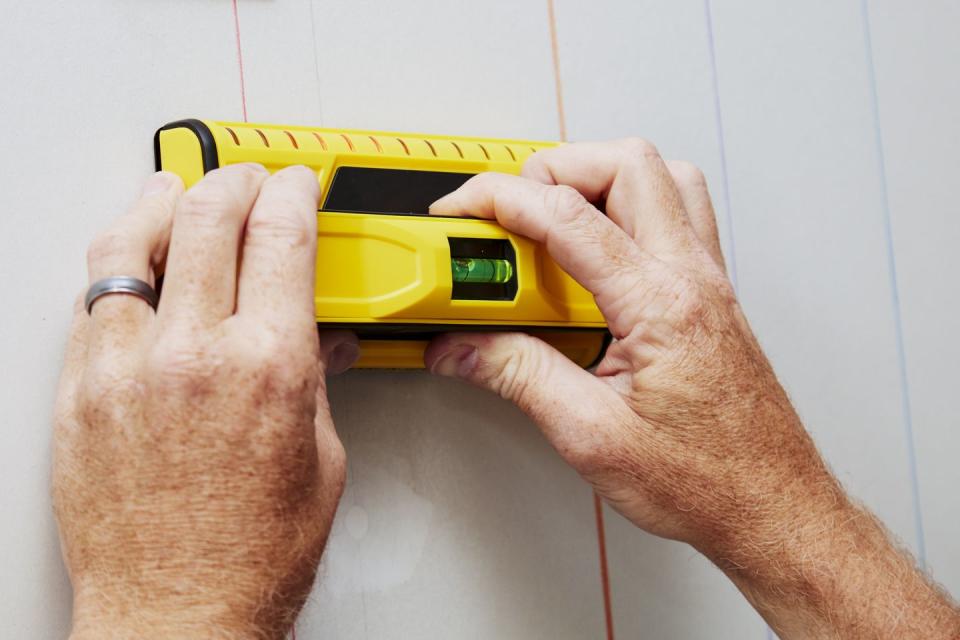
The M90 was also wide enough to indicated doubled-up studs when we scanned around door frames and windows. Overall, we found it simple and easy to use, and it reliably detected wood and metal studs under ¾-inch-thick drywall.
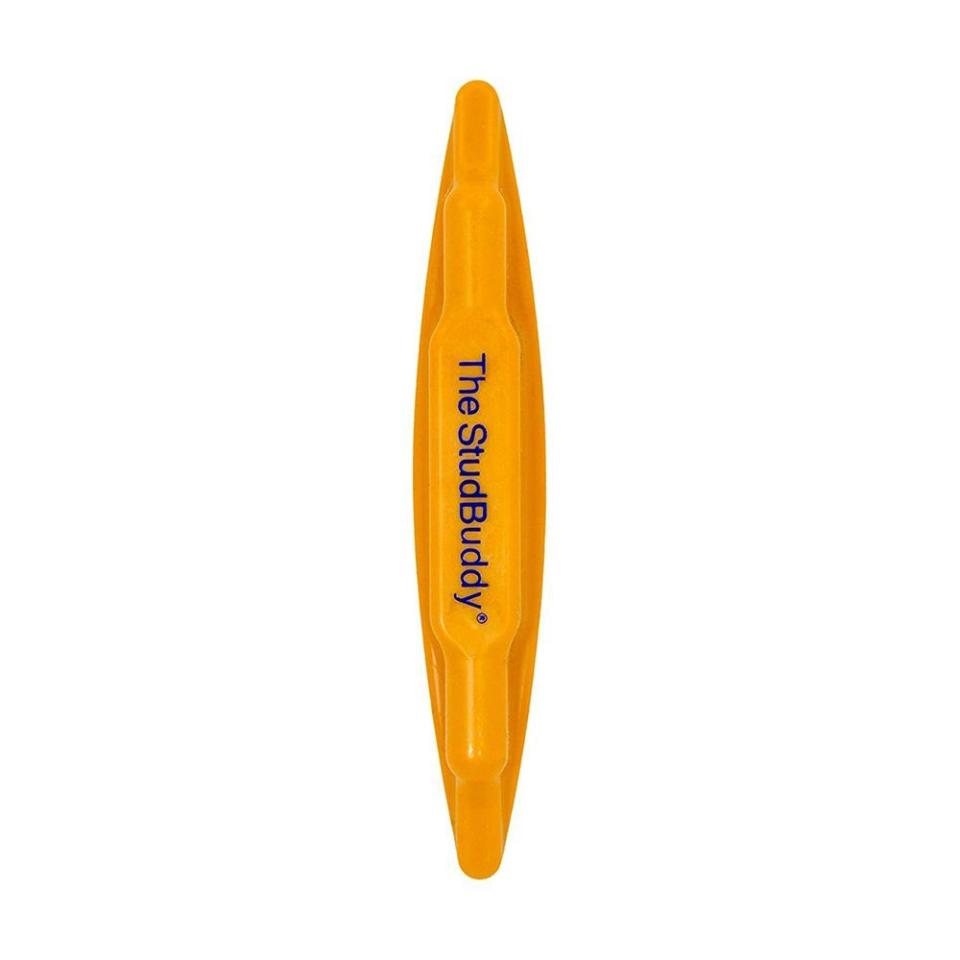
Magnetic Stud Finder
$9.97
amazon.com
For finding studs, things don’t get much simpler than the StudBuddy. Using it, we effortlessly located nails, screws, or metal studs by sliding it in an “S” pattern, back and forth on a wall. Two strong neodymium magnets caused the StudBuddy to snap to ferrous fasteners or studs when we got within about three-quarters of an inch of them.
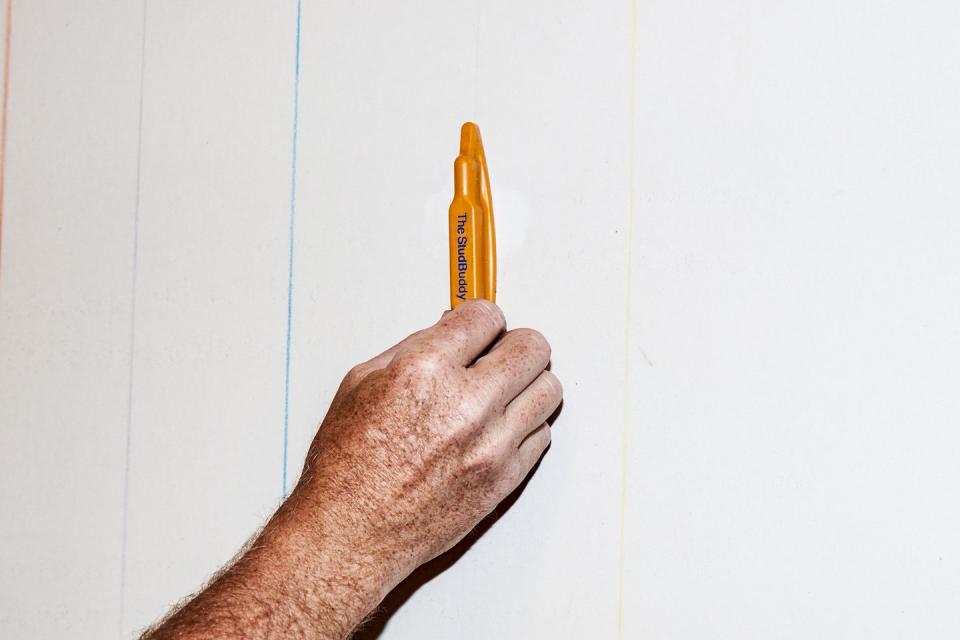
Sliding it up or down quickly confirmed additional hits, and the location and direction of studs. We found it worked even better on metal studs because fewer confirmation “hits” were required. The StudBuddy may also locate other ferrous metals in the wall, like ductwork or electrical boxes—so scanning to confirm stud orientation is important.
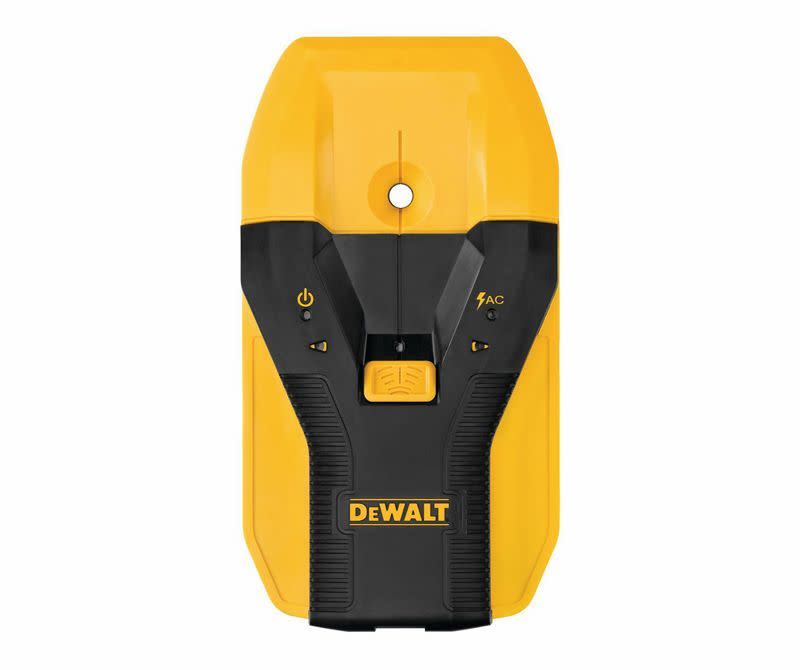
DW0150 Stud Finder
$28.19
amazon.com
DeWalt’s DW0150 consistently found stud centers, locating both wood and metal equally well through both 1⁄2- and 3⁄4-inch drywall. An alert in the form of an LED arrow pointed toward the studs, and we found that traveling over the stud and then back until the DW0150 picked up the center was nearly 100 percent accurate.
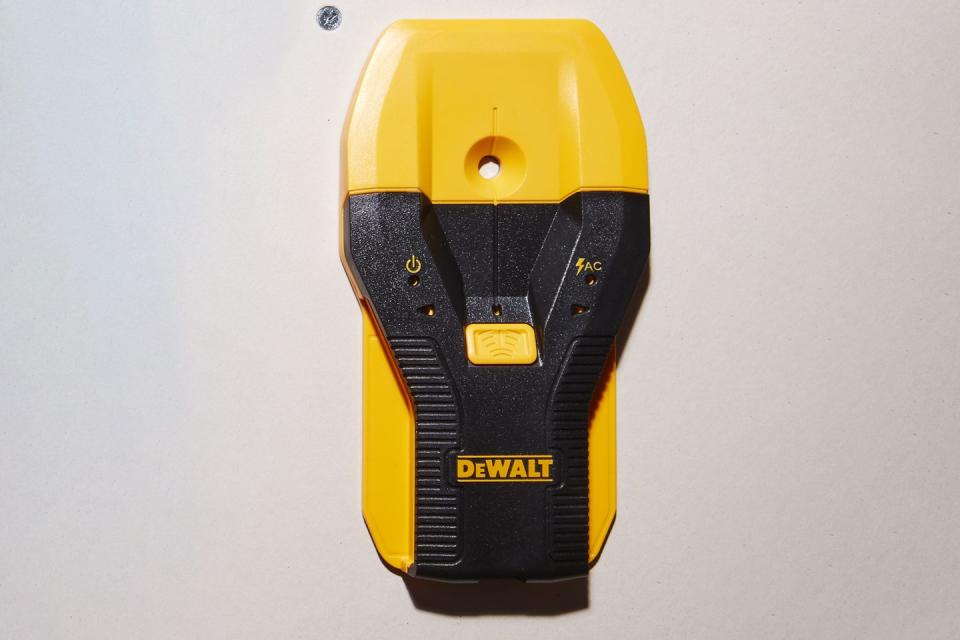
(We’ll give DeWalt kudos, too, for including a window in the center, which made marking stud centers with a pencil easy.) The device also detects AC wiring—it was reliable through a 1⁄2 inch of drywall but only intermittent under the 3⁄4-inch variety.
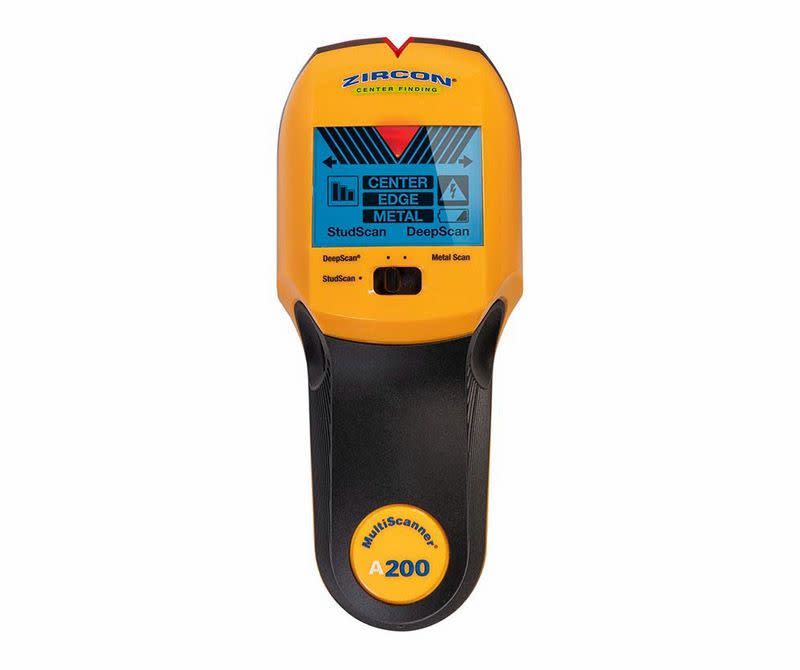
MultiScanner A200 Wall Scanner
$51.99
amazon.com
Courtesy
Zircon’s A200 is a powerful wall scanner with three scan modes. In our testing, it found the studs, iron and copper pipes, and live AC electrical wires in our wall. It was also very reliable and accurate, detecting studs and indicating their centers by projecting a red arrow on the wall. When we passed over live wires, the screen displayed an icon indicating the wires had electricity running through them.

While using it in dedicated metal-scan mode, we found it easy to differentiate between metal plumbing pipes and wood studs. It was a little trickier if metal studs were present, but knowing the stud spacing helped us sort things out.
In deep-scan mode, the A200 didn’t pick up PVC pipes in the wall unless they had water in them. We were able to differentiate between pipes and studs by toggling between stud scan and deep scan. And the A200 presented all this information on its illuminated screen.
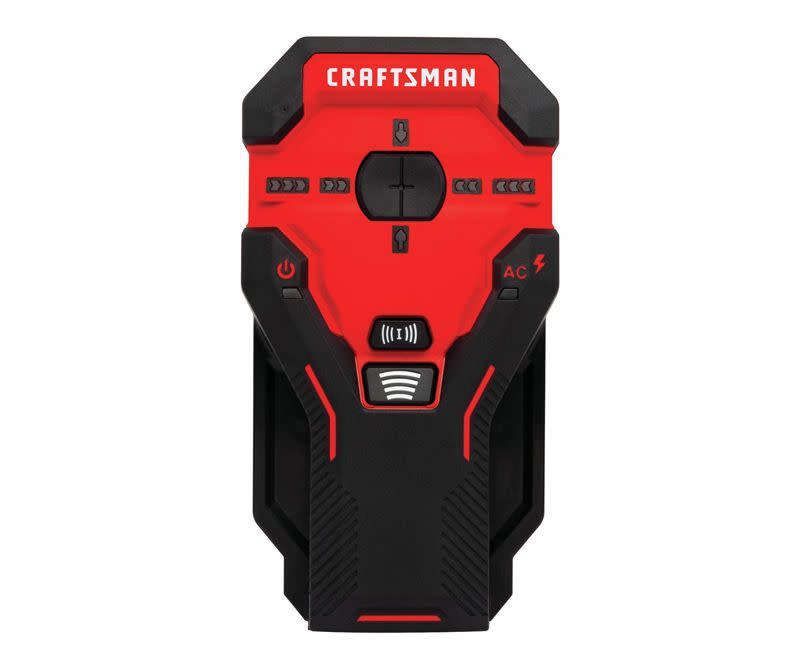
CMHT77623 Stud Finder
$19.98
amazon.com
Craftsman’s center-finding unit has LEDs to indicate scan status and guide you to the center of the stud—orange ones light up when you’re over the stud, and red ones indicate when you hit the center. Scanning slowly in one direction, past the center, and then back got us accurate results over 1⁄2- and 3⁄4-inch drywall.

The AC-detection mode was vague, indicating an area three to four inches wide when it picked up the wiring. But repeated passes allowed us to determine the wiring’s path. In standard scan mode, the Craftsman located some copper pipe, which was odd, but the pipe was too narrow to be a stud and the device never registered a center.
Similarly, it detected black pipe in metal mode. (Note that although it located the pipes, the stud finder couldn’t, nor was it designed to, identify them as such.) Still, these readings can help you identify other objects in the wall you may want to be careful around.

D-Tect 150 Stud Finder
$949.00
homedepot.com
The Bosch Wallscanner D-Tect 150 is more than just a stud sensor. It’s a powerful, professional-grade tool capable of scanning walls and floors for studs, pipe, rebar, and live AC wires—using scan modes for drywall, concrete, deep concrete, wet concrete, metal objects, in-floor heating, and one that shows signal strength.
Our scanning for wood and metal studs and AC wires in standard walls wasn’t much of a challenge for the D-Tect 150; it found all quite reliably. We had to scan concrete floors and masonry walls to investigate its capabilities.
One of the more valuable features is how detected objects appear on the LCD. As you find things, they appear at depths relative to the surface being scanned. For most modes, that’s three inches, but in deep scan, it shows up to six inches. We were able to locate a defunct steel drain buried with 5 inches of concrete in our shop floor.
Thinking of more ways to leverage the D-Tect 150, we searched for a steel survey spike under the pavement at one test editor’s property—and it worked. The D-Tect 150 is not cheap, but if you need to regularly discover hidden things in walls and floors—made from various materials—it can do the job and may be worth the price.
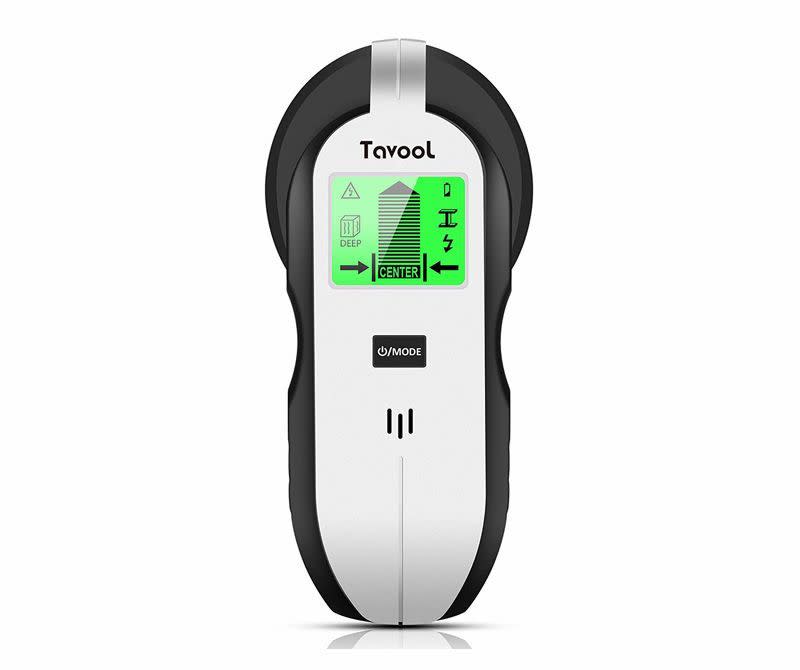
4-in-1 Stud Sensor
$18.99
amazon.com
We noticed many positive reviews on Amazon, so we tried the Tavool 4-in-1 Stud Sensor. And we’ll admit we were surprised. For the money, it’s hard to beat. It features four scan modes: three for specific objects (wood, metal, live AC wiring) plus one for deep scanning—all work reasonably well.
We noted that it could be inaccurate if we neglected to wait for the calibration to complete after turning the unit on. As long as we waited for the audible beep, it found stud centers and edges within ¼ of an inch. We like that it has a center indicator, which saves time making edges to locate the center manually. We could detect copper and black pipe without a center indication in me-scan mode.
We found the live AC wire detection was unreliable, with some misses along the wire path. However, because we had access to the back of the wall, we concluded that this had to do with wire depth—more than 2 inches from the face of the wall and the wires were harder to pick up.
Stud-Finding Tips from Our Expert, Bradley Ford
Most studs are spaced at 16-inch intervals—find one, and the next stud should be about that same distance in either direction. Changes in spacing usually happen near the ends of walls or doors and windows.
If your stud finder seems to be picking things up between the studs, it could be detecting metal or plastic plumbing components, electrical boxes or wiring, or metal ductwork. To combat this, scan above and below the point to ensure it continues to the floor or ceiling. If it doesn’t, it could be something other than a stud.
Electrical wires usually run vertically on the side of a stud and sometimes horizontally between outlets. If there are light fixtures, switches, and outlets on a wall, you can make an educated guess as to where the wires might be.
Pay attention to where the kitchen and bathrooms are, too—water supply and waste pipes for the second floor are often found in walls on the first floor, below sinks, tubs, or showers. (Pro tip: If your basement is unfinished, you can go down there to see where exactly the pipes go up on the ceiling.)
Here are a few other tips for finding studs every single time.
-
Don’t touch the wall with either hand while using a stud finder—this can alter its readings.
-
Some stud finders need to calibrate before scanning, so start away from switches, outlets, or light fixtures.
-
Apply some painter’s tape over the area you want to scan. It’ll give you a surface on which to mark your findings without having to write on the wall.
-
When you detect studs, objects, or live wires, mark them with a pencil or tape.
-
Freshly painted walls may be difficult to scan for a few weeks due to the moisture in the paint.
You Might Also Like
